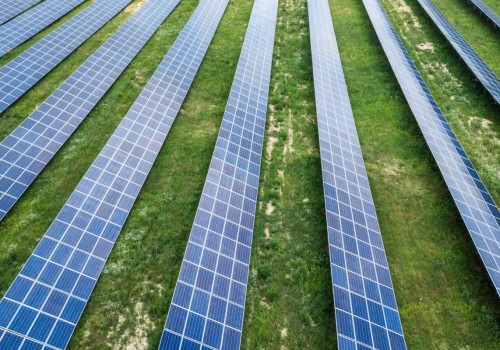To help you, we have selected some of the most important factors to consider when choosing exactly which solar power bank you want, size and weight, charging capacity, charging speed, battery charging time, endurance, number of connections. The first thing to check before purchasing any type of power bank is its nominal capacity. Even with a solar power bank, it simply tells you how long your power bank will last on a single charge. Power ratings quantify the potential power of a solar panel under ideal conditions, i.e.
during bluebird skies in the middle of the day without obstructions. The higher the wattage, the more efficiently the panel will use available sunlight to power any plugged in device. The amount of time it takes for a solar charger to charge from solar energy depends on several factors. The size of the solar panel will determine how much energy the device can absorb at the same time.
In addition, the amount of light energy available (such as sunny days vs. Cloudy days) play an important role. Obviously, determining the charging time can be a little tricky. However, many of the best portable phone charger options can be charged in around 3 to 4 hours under ideal conditions.
In cases where additional panels are an option, they can be charged even faster. Size is an important consideration when choosing a solar-powered mobile device, and this is particularly true when selecting a panel charger. The larger the surface area of the solar panel, the more solar energy can be absorbed. A larger size means faster charging of the battery, either for the built-in battery in a power bank or for the device connected to the panels.
Choose the size of the panel based on what is most convenient for the intended use. For people looking to take advantage of a lunch break along the way, Superallure's solar charger and power bank combo kit might be worth buying. This kit includes a photovoltaic cell integrated into the bank, as well as four additional solar panels to charge the huge 43,800 mAh battery. This kit features a Lightning charging mode that can charge a phone up to 75 percent in less than an hour.
The 16 watt solar panels also help fill the battery, allowing you to keep up on sunny days. The integrated solar panel won't be able to absorb sunlight in wireless charging mode (it will be hidden under the phone), but the extra panels can keep things working. Those looking for a reliable combination of solar bank and panel kit should consider this kit of five solar charging panels. This kit comes with a 20,000 mAh solar bank for storing energy, as well as a four-panel foldable solar panel kit.
The additional kits attach and detach easily, allowing users to use the entire kit or simply carry the bench on the go. While the 20,000 mAh battery in this kit may not be the largest on the market, it is capable of charging up to four devices at once (two USB, wireless and one USB-C port). However, one disadvantage of this kit is that the solar panels do not have a loop to hang from a backpack. Once we knew what features to look for, we did a thorough product research to compile a list of products that we thought were successful.
We then compared their prices, battery sizes, and additional features to determine how much value they offered. This allowed us to let go of some while limiting ourselves to the best products. It depends on the size of the battery, but many solar power banks can recharge the average phone from zero to 100 percent between two and three times. That said, having a few hours of charge on your solar power bank is good for charging your mobile phone or other small device a couple of times.
If you are planning to live off the grid but want to keep up to date with what is happening elsewhere, then you can make the most of a solar charger. Whether it's a broken car on the side of the road, bad weather, or even getting lost in a new city, having a solar charger that can easily charge a phone that is turning off can make all the difference. You can also plug some solar power banks into power outlets to charge their batteries; in these cases, the sun acts as an alternative energy source to the battery, explains Sudip K. This means that solar power banks don't need to be exposed to the sun while charging your devices (as long as the battery is full), giving you more flexibility as to when and how you use them.
If you know you'll be away from a power outlet for a while and you need to rely more on the solar aspect of the unit, you'll want to opt for a larger solar panel. But for people who prefer to save a little money, the Blavor solar charger offers a battery life of 10,000 mAh without increasing the bill. Moving on to its capacity, it is a 26800 mAh solar power bank, which is very similar to other options available. BigBlue 28W solar charger could be a solid option to quickly charge multiple devices on a sunny day.
Whether you're someone who has fun doing outdoor activities or just someone who is always busy and doesn't have time for other things, you can both benefit from a durable and reliable solar power bank to keep your gadgets or mobile devices fully prepared to meet your needs. Most solar power banks are so small and compact that they fit in a person's pocket, but don't underestimate their size and capabilities. Here are the best solar power banks, many with additional features such as wireless charging, outdoor waterproof and built-in flashlights. It will also help to find out if the solar power charger meets the requirements that your phone needs to maintain its energy.
. .












Leave a Comment